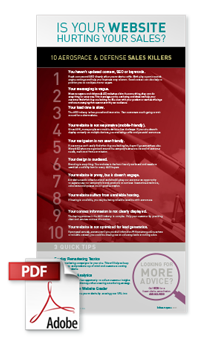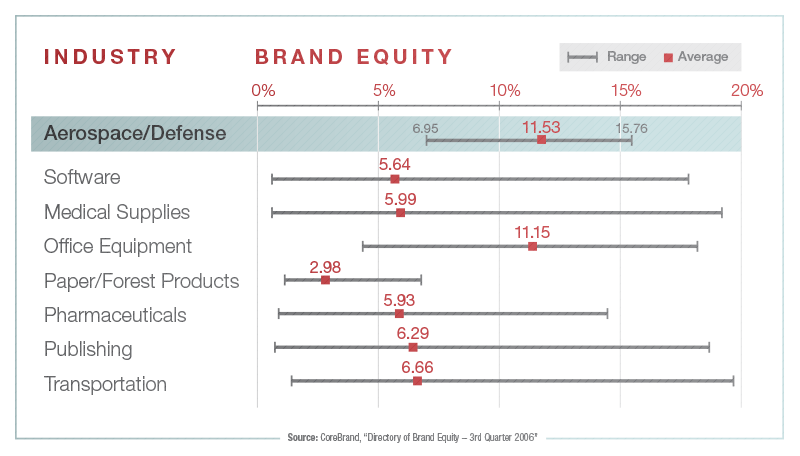Category: Aerospace Specific
Audio: Highlights from NBAA 2016
Last week, several members of the BDN team attended NBAA’S Business Aviation Convention and Exhibition — the world’s largest business aviation trade show. This venue has proven to be a bellwether of trends and economic vitality for the civil aviation market. All of the major players in business aviation were well represented in Orlando, and while the total number of exhibitors may have been up, consensus was that attendance numbers were flat. That’s not to say that there weren’t new products and announcements to get excited about, only that it was “business as usual” at this annual show.
In this week’s audio program — recorded at the end of day two of the conference — business development executive Ashley Cutler and senior designer Nick Markwardt discuss their observations and highlights from this year’s show.

[vc_separator type=”” size=”” icon=”plane”]
Download our 2017 A&D Trade Show Directory here. We will continue to add events as organizers finalize and make those details available.
Editor’s Note: Nick references the Wittman Museum while describing the EAA experience. It is actually the EAA AirVenture Museum at Wittman Regional Airport.
Aerospace & Defense Media 2017: The Definitive Guide
Do you need to find and reach key audiences for your marketing messages?
Are you looking for editorial contacts or places to advertise your products and services?
This guide to the aerospace and defense industry media can help.
Updated for 2017, it’s available now as you begin planning for next year, with hundreds of entries for relevant media worldwide.
Start Planning Now: The 2017 A&D Trade Show Directory is Here
According to Forrester Research, B2B marketers spend more on trade shows, conferences and events than on any other marketing tactic. They are especially important to aerospace and defense marketers.
That’s why, year after year, this handy directory of aerospace, defense and aviation events is our most popular download. It’s the ultimate industry event reference — and it’s available to you now at no cost, exclusively from BDN Aerospace Marketing.
Download your 2017 A&D Trade Show Directory today, and check back later this year for updates. We will continue to add events as organizers finalize and make those details available.
10 Ways Your A&D Website is Silently Killing Sales
Information from Forrester Research Inc. shows that B2B marketers still spend the lion’s share of their budgets on in-person trade shows and events, closely followed by digital advertising/marketing, with content marketing, websites, and digital marketing tied for third place, followed by a broad range of other expenditures.
 Our experience in aviation, aerospace and defense marketing confirms the Forrester findings. Events and conferences that facilitate in-person connections still reign supreme in our industry. However, we also see that website updates and development have become a priority for many clients.
Our experience in aviation, aerospace and defense marketing confirms the Forrester findings. Events and conferences that facilitate in-person connections still reign supreme in our industry. However, we also see that website updates and development have become a priority for many clients.
In some cases, these marketers have realized that the time has come to modernize their current site for content, design and functionality. But, increasingly, the need to update a website is driven by a higher-level strategy to use the site as the hub of a larger marketing effort, often an inbound marketing program designed to generate leads from a pool of self-directed buyers who navigate the sales process without the help of a sales rep. In fact, Forrester reports that today’s B2B buyers are two-thirds to 90 percent of the way through their purchase journey before reaching out to the vendor they have found online.
The reality is that your website can work for you or work against you. It can enable sales — or it can kill them. Want to see how your website stacks up? Check out this list of 10 A&D Sales Killers.
[vc_separator type=”” size=”” icon=”plane”]
If you like this blog you may also be interested in:
The 9 Things You Must Consider Before Redesigning Your Website
How Questioning Everything Helps Aerospace Marketers Save Money
 Question everything. Marketers who work with tight budgets must get comfortable with questioning the status quo.
Question everything. Marketers who work with tight budgets must get comfortable with questioning the status quo.
In 1987, the CEO of American Airlines saved $40,000 a year by removing a single olive from each customer’s salad. Thirty years later, budget-strapped aerospace marketers can learn how to save money from that legendary aviation industry CEO.
[vc_separator type=”” size=”” icon=”plane”]
Start by asking why.
Fast Company wrote about “The Importance of Creating a Culture of Why,” explaining that in many workplaces, “Why?” has become a stand-in for “I disagree.” When marketers fear creating conflict with co-workers, it can lead to “going along to get along,” which can result in bad spending decisions. Fast Company advises — and we agree — that we all need to reclaim “Why?” as a positive force in the workplace.
- Why should we place this ad?
- Why do we need to attend this event?
- Why are we printing so many brochures?
Tip: When you have clearly identified your target audience and have a complete understanding of your buyers and their behavior, it’s much easier to spend only on things that map to their needs and preferences. Build buyer personas as part of your marketing plan and bring this important information into focus. MarketingProfs created an excellent resource called “Beginners Guide to Creating Fleshed-Out Buyer Personas for B2B Inbound Marketing.”
Don’t get sidetracked.
Managing a tight budget requires focus that helps us avoid doing things for the wrong reasons (like to please a co-worker). Doing an ad, a show or printing brochures may be important, but asking the right questions can stop us from doing things for the wrong reasons.
- I don’t want conflict
- It’s a great deal/cheap
- Our competition is doing it
- We’ve always done it this way
Tip: Don’t spend your limited dollars on tactical experimentation, guesswork or assumptions — and don’t let anyone, even the most persuasive salesperson or colleague, convince you to do otherwise. Stay focused on goals and expected end results.
Keep asking questions, with a focus on outcomes.
If we are not tracking or evaluating results, and using what we learn to inform future spending decisions, we are shortchanging our employer and reinforcing the perception of marketing as a money pit.
- What exactly has this tactic accomplished for us in the past?
- How does this directly connect to our marketing strategy and goals?
- What is the expected outcome of doing or not doing this?
- How, specifically, will we measure success?
Tip: Successful aerospace marketers know that Customer Relationship Management (CRM) software is a critical data source that can help understand customer trends and behavior while showing marketers which tactics are driving leads and sales. DART Aerospace worked with ForgeCRM, a system designed specifically for manufacturers, and GE Aviation uses Salesforce.
Other budget-friendly resources:
Trade shows and events are important and expensive. Before you commit to anything, carefully consider and evaluate what you’ll get for your investment. This checklist can help.
A marketing plan can help you make focused spending decisions that link to the bottom line. Download a step-by-step template here.
How to Get the Aerospace Marketing Budget You Need
 New year. New opportunities. Same inadequate marketing budget.
New year. New opportunities. Same inadequate marketing budget.
Let’s face it, the budgeting process at too many aerospace and defense companies is flawed. Budgets may be dictated by people who don’t understand marketing…based on last year’s numbers instead of this year’s realities…or result from a last-minute fire drill because the boss wants numbers now.
Next year is going to be different. And it starts right here.
[vc_separator type=”” size=”” icon=”plane”]
Don’t Wait
Start mapping out your goals, strategy, plan and budget requirements now. Go to your boss well in advance of budget season with a buttoned-up, airtight business presentation that changes the conversation about the role, purpose and needs of a professional marketing organization. Elevate the discussion. Stop talking about outputs — you both should be focused on outcomes. Don’t spend time debating the merits of specific trade shows, advertising or other low-level tactics. They are simply a means to an end and should be left to the marketing team.
Actionable Idea: This marketing plan template is a good way to get started.
Have a Plan
Develop and present a plan that closely supports your organization’s business goals. Explain to your boss what you are recommending, and why, always linking back to expected outcomes. Show how marketing is a necessary investment — not a necessary evil — that is essential to business success.
Actionable Idea: Set the tone for an elevated discussion with an unexpected presentation format, like Prezi, or with a website or portal purpose-built and devoted to housing your proposed marketing program. Use the site to showcase your plan and offer it as a way for the boss to always have real-time digital access and visibility to marketing plans, activities and progress.
Use Data
In addition to a plan and business case, show the boss that your request is appropriate and supported by industry benchmarks. Brainrider reports that B2B marketing budgets as a percentage of total gross revenues remain steady at 2 percent, and other benchmarking sources show it’s closer to 5 percent. In our experience, aerospace businesses tend to spend less. Either way, the numbers need to be adjusted for new businesses, product launches, rebranding and other special circumstances.
Actionable Idea: Showing the boss that you are aware of best practices in budget allocation is also important, and referring to data bolsters your case.
Be Accountable
Establish and track three-to-five relevant Key Performance Indicators (KPIs) as agreed-on measures of success. Forget about vanity metrics. Impact Branding suggests five truly meaningful KPIs and explains how to calculate each one here.
Customer Lifetime Value – Understanding the value of a new customer can help you decide how much to spend on marketing.
Customer Acquisition Cost – Allocate your budget wisely by investing in the channels and tactics that have the lowest acquisition cost.
Sales Response Time – Customers are well on their way to making a decision before they ever contact you, so when they do reach out they are sales-ready. Don’t keep them waiting.
Inbound Links – Inbound links help SEO but also support brand awareness and authority.
Ratio of Website Leads to Marketing Qualified Leads – Too many unqualified leads waste precious resources but do little to drive results.
Actionable Idea: Post and maintain digital dashboards on your marketing website or portal.
Tell us about your budgeting process and how you get the resources you need. And, if you liked this post you may also enjoy our recent audio presentation. It provides actionable ideas for budget-friendly marketing.
Realize the Full Value of Your Aerospace Business Brand

Taking on a branding or rebranding program for your aerospace business is not for the faint of heart. Brand work requires discipline, focus, commitment and, above all, honesty.
In our last edition of the Flight Manual we listed 10 warning signs that you might have a weak brand. This week, courtesy of Lippincott, we are providing a list of questions to jump start the branding discussion internally.
If you think you have a branding problem and want to take steps to address it internally, we suggest starting with a very small team of strategically minded leaders who are willing to take an unflinching look at your business and answer these questions. There is no room for ego or living in the past, and this is not a job for a large committee.
This more detailed assessment will not be easy, but it is a necessary step in further assessing the health of your brand and getting internal alignment on how or if to proceed, which is critical.
Are you faced with skeptics who argue that branding is not important to aerospace and defense businesses? This data from the Harvard Business Review speaks for itself.

Bear in mind that these questions are just a starting point. Audience research is advisable to validate your internal assumptions and get a true picture of how you are perceived.
- Does our reputation immediately put us on our customers’ mental short lists for their next big orders or programs? How do we know one way or another? If we don’t know, how do we plan to find out?
- Are we on our customers’ preferred supplier lists? If so, where do we place, and how does that compare to our place last year or two years ago? If we’re not on the list, why is that and what do we expect to do about it?
- Does our brand help us to hire world-class talent? What does our brand stand for with potential recruits? Do we even know? For that matter, what do our employees think about our brand — or about any of our product brands? Are they proud of the name—or ashamed of it? Do they encourage or discourage others to join the company?
- Could our brand help us win a bid if reputation were the deciding factor? If not, why not? Why might our competitor’s brand help them win instead?
- What does our brand say about us to potential new customers? Does our brand give us entrée to expand into adjacent markets? To take on higher value-added roles such as consulting services? Or are we forever painted as one particular kind of company, unable to do anything different?
- To what extent is our brand being eclipsed as our big customers or channel partners consolidate and become better-known to end customers and Wall Street?
- What do we need to do to keep our brand from disappearing?
- Do investors really know us? How does Wall Street describe us? How does that square with how we see ourselves?
- Do we have the right mix of brands to go to market? Do our brands fit together logically? Are we supporting and spending on the right brands?
- How smart are we about our own brand? What should our brand stand for? Can we describe our brand strategy in a 20-second elevator pitch? What’s different about it? What does it contribute to the bottom line? Which customer touchpoints make the biggest difference to our brand?
- Are we actually living the brand? Do our employees know how to deliver our brand? Do they have the tools to do so?
Source: Lippincott originally published these 10 “Call to Action” questions in an excellent resource called “The Rise and Rise of the B2B Brand.”
Up Next
Moving Ahead: Your Blueprint for Branding
Also
If you liked this blog you may also want to read about the “5 Branding Myths that are Hurting Your Aerospace Business.”
Does Your Aerospace Business Have a Branding Problem?
 We hear from lots of aerospace and defense professionals who think they have a branding problem or who tell us they want to “take their brand to the next level.”
We hear from lots of aerospace and defense professionals who think they have a branding problem or who tell us they want to “take their brand to the next level.”
Quite often they are thinking about their brand in visual terms, and it’s true that design is a critical element of any great brand. But there’s so much more to consider when evaluating the strength of your brand.
Now, as we continue our month-long series about aerospace industry branding, it’s time to take stock.
Before we launch into detailed recommendations about repairing or rebuilding your brand, let’s consider if you do in fact have a brand problem.
Start by taking this quick 10-question assessment as a first step in the process. Each “yes” answer is a red flag; and multiple yeses are a strong indication that your brand is in trouble and further action is required.
10 Red Flags
Weak brands share many or all of these characteristics.
- Do you consistently compete on price?
- Does your business lack a clear focus and do you try to be everything to everyone?
- Are you unable to articulate a true value proposition — something customers care about that distinguishes you from everyone else?
- Does your brand architecture create confusion? Confusing brands have too many individual product names or sub-brands, and multiple logos, taglines and messages.
- Does your CEO fail to actively support or champion branding?
- No single person owns the brand internally, standards don’t exist or are not followed.
- Is your market, your business or your business strategy undergoing significant change?
- Does your company suffer from the “me too” syndrome, where nothing looks or sounds unique? And does your leadership wants you to fit in and fall in line with what others are doing and saying?
- Are you in a crowded market space and not growing?
- Is your messaging company-centric and not customer-centric?
If you’d like to dig deeper and start seriously assessing your brand, this Lippincott resource is a great place to start.
Want to see a ranking of the 25 most valuable brands in aerospace? A few of them just might surprise you.
Up Next: Find out how to build or rebuild your aerospace industry brand. We’ll walk you through the process one step at a time.
5 Branding Myths that are Hurting Your Aerospace Business

Branding is an ongoing source of discussion and disagreement in aerospace marketing, according to our recent industry surveys.
While some say they spend a lot of time and effort building their brand, far too many say that investing in branding is a waste of time and money.
As we enter into a month-long examination of aerospace industry branding, we start by tackling these 5 myths that are holding us back from better branding, better marketing and better results.
Myth No. 1: Branding is a waste of money.
Really? Consider this.
Valued at $121.8 billion, Microsoft’s B2B brand is the most valuable in the world. Siemens, a company with strong interests in aerospace, ranks at No. 20 with a value of $12.4 billion. Read more here.
But there’s more. A McKinsey study of B2B brands shows that companies with brands that are perceived as strong generate a higher EBIT margin than others.
In fact, strong brands outperform weak brands by 20 percent. A Forbes article, “Why B-To-B Branding Matters More than You Think,” cited the example of pump manufacturer Gardner Denver, reporting that the company attributes 43 percent of its value to be goodwill and other intangible assets.
This is consistent with our experience and our research. In one engagement, our client research showed that although two direct competitors had virtually identical ratings for factors like product quality and reliability, respondents were twice as likely to buy from the one with a large, well established brand name. When all other factors were equal, the best brand won.
Myth No. 2: Branding is only for consumer companies and has no bearing on a customer’s decision-making process. People will buy from us if we provide good products and competitive prices.
We hear this a lot. But the Forbes article reports that B2B brands are actually more important than B2C brands because B2B purchases matter more. “Buy the wrong toothpaste, and you can always change brands when the tube runs out. Buy the wrong turbine and you could hurt your company’s earnings for years – and find yourself looking for another job.”
Trust is paramount in our industry, and is a critical factor in any B2B buying decision. But you can’t sell trust by telling people you are trustworthy in an ad or a brochure. They have to feel it — and that happens through a clear and consistent brand experience.
Myth No. 3: My brand is my logo and tagline.
Your logo (and tagline if you have one) is an incredibly important part of your brand, but it’s only one element. Logos serve as a kind of visual shorthand for your business to help customers immediately identify and recall who you are and what you do.
Branding is also not synonymous with marketing. Marketing certainly contributes to a brand, but like the logo example, it is one small part of a much larger whole.
Writing for the Tronvig Group, James Heaton defines branding as “the expression of the essential truth or value of an organization, product, or service. It is communication of characteristics, values, and attributes that clarify what this particular brand is and is not.”
Heaton nails it, especially when he says this. “A brand will help encourage someone to buy a product, and it directly supports whatever sales or marketing activities are in play, but the brand does not explicitly say, “buy me.” Instead, it says, “This is what I am. This is why I exist. If you agree, if you like me, you can buy me, support me, and recommend me to your friends.”
As we tell our clients, a solid brand and strategic marketing program won’t make the sale, but they will create an environment conducive to making the sale.
Myth No. 4: Branding is for big companies with big budgets.
Once upon a time this may have been true. Building an aerospace brand has traditionally relied largely, but not exclusively, on advertising.
But advertising is expensive and it can be challenging to show a return on the investment made. For those who aren’t in a position to advertise, social media is a great and affordable tool for defining and building your brand, all while interacting with your audience and giving them a feel for who you are.
At a time when many aerospace businesses look and sound alike, small companies, especially, can leverage branding to set themselves apart from competitors, get noticed and be remembered!
For more ideas and inspiration, see how several B2B businesses, including GE and Maersk Line, are successfully using social media to build their brands.
Myth No. 5: Brands appeal to emotional buyers. B2B buyers make rational decisions.
B2B buyers are people. And people have emotions. Marketo makes the case that because B2B buyers are overwhelmed by information they use heuristics (a simple and efficient emotional shorthand used in decision-making). In fact, “whether or not the buyer realizes it, the decision is often made long before the buying process is completed. When this happens, even subconsciously, much of the buying process ends up being an effort to justify the initial emotional decision. B2B marketers can and should tap into this by appealing to the emotional side of their prospects, as well as their rational side. This is where branding comes in.”
Does your business believe in branding? Do they invest in it? Why or why not?
If you like this article, you may also be interested in:
Trends and Challenges in Aerospace Marketing: ‘We Need More Support’
 Last week we brought you research data and insight about trends impacting aerospace and defense marketers.
Last week we brought you research data and insight about trends impacting aerospace and defense marketers.
This week we continue that theme with verbatim comments from more than 30 survey respondents who wrote about their experiences in aerospace marketing. Here are the challenges, opportunities and trends they shared.
Market Conditions and Budgets
“Our biggest challenge is volatility within the industries where we work, specifically petroleum exploration.”
“The downturn in defense and aerospace has management looking to decrease marketing expenditures.”
“A decline in sales is dramatically impacting marketing resources. I am hopeful that the industry will rebound over the next few years.”
“Larger companies have more influence and are moving the market away from our solutions.”
“We are challenged by collapsing markets due to the global economy.”
“It seems our business is very much influenced by politics and whatever the current budget constraints that are in play.”
“We have too much ground to cover and not enough people or time to adequately address.”
“Our primary challenge as a small aviation electronics manufacturer is developing marketing programs around a changing product line that is undergoing constant timeline and feature revisions due to limited staff. Deadlines keep getting pushed back and budgets reduced due to delays in getting product to market.”
“Lack of funding limits our team and our messaging approach.”
“Marketing requires a sizeable investment of cash.”
“Due to tough economic times, budgeting for all required needs of a company can be tough. We use as many free social media and website resources as possible to help reduce costs associated with marketing.”
“Too much spending is required for trade shows and events that never go away. There are more every year.”
Insights: Budgets and resources are clearly a concern for our industry. Last week’s survey results revealed widespread under-spending, and the verbatim comments are in line with that assessment. Respondents also voiced concerns about the state of the industry, citing declining market opportunities as a prime challenge. With downturns in the business aviation, rotorcraft and defense segments, this is a very real challenge that must be addressed. But why are so many companies cutting marketing when sales are down? It defies logic. Because just as food is the fuel that helps us remain healthy and thrive, marketing is the fuel that is essential for business success. Without it, our businesses will weaken, wither and die. If marketing is the engine that powers your business, is it really the area to cut corners or to settle for a makeshift solution?
Resource: This white paper has more information about how much companies should budget for marketing, with benchmarks and industry data you need now.
Targeted Marketing to Reach Decision Makers
“Getting in front of decision makers is a challenge. Everyone understands our business and how it may be used to leverage their efforts, but the decision makers are buried in white noise from everything else.”
“In my business, marketing means selling ideas to customers and obtaining funding for those ideas. They are not for public dissemination, so marketing is very selective and done on a one-on-one basis vs. broadcasting. As we gain ground in funded projects and create products for sale, marketing will become somewhat more traditional, but still very selective, and the objective targets will be contacted via personal measures.”
“It’s tough to break through the clutter of email and offers.”
“I see a lot of money being spent on non-productive initiatives. As a small niche consulting firm, we would only be served by targeted marketing to a few potential prospects.”
“It’s extremely difficult to get a foot in the door with the right people. Sending emails offering support and adding value with our quality products and services to try to get new customers is completely ineffective. We’ve hit a wall as far as generating new leads.”
Insights: Aerospace industry marketers are generally fortunate to have a clearly defined audience of potential customers and influencers. Being highly targeted in this way should make our jobs easier, right? Yet time and time again we hear from marketers who are frustrated with their inability to reach decision makers. If this is a challenge you face, we suggest that you start by questioning your diagnosis. Are you sure that you are not reaching the right people? Or is there a problem with the messaging? Is the delivery method wrong? What do your analytics tell you? An abundance of aerospace marketing is company-centric, focusing too much on what the company does, and too little on how it will make the customer’s life better. Get to the root cause of the problem and you’ll be one step closer to a real solution.
Resources: If your goal is to do business with OEMs, this blog, “The Truth About Marketing to Aerospace OEMs,” details six specific steps to connect with your target audience. Or, download this related infographic, “How to Gain Visibility with OEMs.” Are you working to generate more leads? Check out “Four Keys to Lead-Generation Success.”
Need for Measurement
“We are unable to measure return on investment effectively or directly.”
“On the general aviation side, finding ways to cost-effectively measure ROI and leads remains a challenge. The industry is specialized enough to warrant a more customized approach (software, etc.) but too small to really afford it, so a patchwork of systems is created.”
“Creating meaningful content, with enough depth and technical information to satisfy the customer, is a challenge. We also lack marketing team resources and the ability to justify ROI to the CFO.”
Insights: Measuring the impact of marketing is possible – it’s just not easy. Take advantage of the many resources and tools available to help you establish and build a process that will work for you and your company. And remember, calculating ROI is simply the cost of a sale subtracted from the profits on that sale, divided by the profit number (and expressed as a percentage).
Resources: While we do not endorse any single program or provider, explore these resources to learn more about how to measure your marketing effectiveness: Marketingprofs, Lenskold, Marketingmo, or Marketo.
Embracing New Approaches & Fresh Ideas
“Keeping up with social media is a challenge since it morphs easily into other avenues that may or may not be readily addressed.”
“Personal relationships and prior customers form the basis of our support. It’s tough to break the 30-year mold of “what we have done in the past” to get senior management buy-in on newer marketing trends and strategies. We also don’t have anyone with a formal marketing background to help us stay current and continually engage our market sector. We also don’t have a large budget for marketing. We are in the black hole of business development.”
“Most marketing efforts are run of the mill, with everyone using the same idea or concept.”
“People don’t think outside the box enough. A great deal of advertising and publication content is flat and lifeless.”
Insights: We often hear from aerospace marketers who feel their work — or that of their outside provider — has become stale. Many others say that they are overworked, overwhelmed and simply unable to keep up with the new tools and technologies that are revolutionizing our profession.
Resources: Get your marketing program back on track with inspiration from this fact-filled infographic, “12 Secrets to Marketing Success.” Do something different! From live chat to drones, here are 10 fresh ideas to breathe new life into a marketing program that has grown stale. Some businesses find that external support is a good fit for their needs; other times it’s not the best option. This white paper, “Is it Time to Hire an Outside Marketing Firm?” can help you find the approach that’s right for you.
Other Comments & Concerns
“Online tactics and properties are key to our marketing strategy, but using an old-fashioned direct approach (postcards) is also successful. We were staff-challenged last year, but have since staffed up. This allows us to focus on our biggest asset, our website, while also pursuing direct marketing. Supplying good content and imagery is always an issue with a smaller budget. Managing an integrated marketing program with many moving parts and deadlines is a challenge, and it’s hard to know whether a marketing management application will really help, or end up becoming the work. We have also been challenged measuring ROI for activities, but have determined that a contributory methodology is likely the best. We look at what activity contributed to a sale versus pegging a sale to one activity — something that is very difficult to do in B to B marketing.”
“Social media does not reach 59-65 year-old C-level executives.”
“Our major challenge is getting corporate approval for website redesign. The current site is ancient, has insufficient content, and is hard to navigate.”
“I see many smaller niche print and digital publications refusing to cover a newsworthy product launch just because the company is not an advertiser. We are finding that editorial is being driven a lot more by advertising sales input — at least for smaller market media.”
“Our real issue is how to be more efficient.”
“It’s hard to convince anyone that I’ve spoken to in aerospace that image, and how they present themselves, matters.”
“Building brand awareness for new or merged brands is always a challenge.”
What are your marketing challenges, issues and concerns? We’d love to hear from you and welcome all questions and comments!

